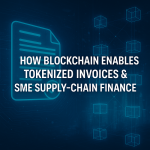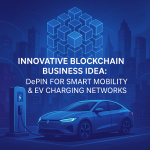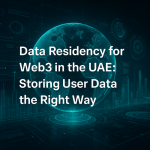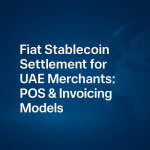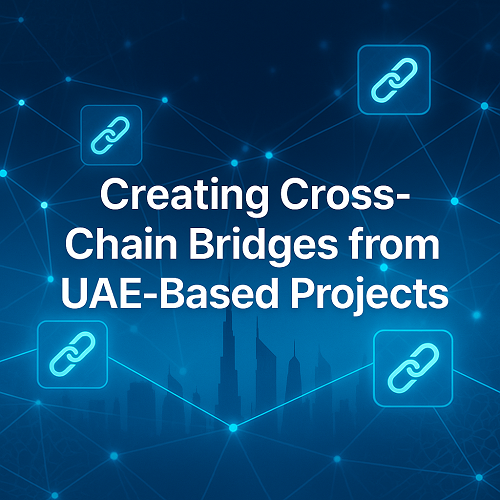Table of Contents
- Introduction
- Why Interoperability Is Critical in Web3
- Why the UAE Is Leading Cross-Chain Innovation
- How Cross-Chain Bridges Work
- Key UAE Projects Building Cross-Chain Infrastructure
- Cross-Chain Bridges and Tokenized Assets
- Regulatory Framework: VARA, DIFC, and ADGM
- Integrating Bridges with the Digital Dirham
- Challenges Facing UAE Cross-Chain Projects
- Future Outlook: UAE’s Role in Global Web3 Interoperability
- FAQs
- Final Thoughts
- Partner with Websima
Introduction
As Web3 ecosystems continue to expand, one of the most significant challenges facing developers, enterprises, and investors is blockchain fragmentation. Different chains — Ethereum, Polygon, Solana, BNB Chain, and others — operate independently, making it harder to move assets, share liquidity, and build multi-chain decentralized applications (dApps).
This is where cross-chain bridges become essential. These protocols allow secure token transfers, data exchange, smart contract and UAE stablecoin interoperability between multiple blockchains, enabling ecosystems to work together seamlessly.
In the UAE, forward-thinking regulations, government-backed strategies, and enterprise-grade Web3 clusters have positioned the country as a global leader in blockchain interoperability. With initiatives like the Dubai Metaverse Strategy and regulatory frameworks set by VARA, Cross-chain Bridges UAE are paving the way for a connected, scalable, and future-ready digital economy.
We say blockchain will change world
Years of innovation for onboarding the next billion usersBut we are still not able to fix the basic cross-chain UX issue
Even today if you need to bridge funds, it is such a pain – bridges are slow and risky af@AcrossProtocol fixes it pic.twitter.com/1A6PXCBzS4
— Sakshi (@sakshimiishra) July 27, 2025
Why Interoperability Is Critical in Web3

Without interoperability, blockchain ecosystems remain isolated, which creates fragmented liquidity and hinders user experience.
Cross-chain bridges solve these issues by:
- Unlocking liquidity → Seamlessly moving assets across multiple chains.
- Enabling composability → Allowing dApps and DeFi protocols to integrate across ecosystems.
- Improving usability → One wallet, multiple networks, zero friction.
- Accelerating enterprise adoption → Supporting tokenized real estate, DeFi solutions, and multi-chain NFT frameworks.
According to the Chainalysis Cross-Chain Activity Report, monthly transaction volumes on cross-chain bridges ranged between $1.5 billion and $3.2 billion in 2024, demonstrating their growing role in powering the Web3 economy.
Why the UAE Is Leading Cross-Chain Innovation
The UAE has cultivated one of the most advanced Web3 ecosystems globally through:
- Regulatory clarity → Dubai’s Virtual Assets Regulatory Authority (VARA) sets structured frameworks for cross-chain solutions.
- Innovation hubs → DIFC and ADGM offer secure sandboxes for bridge testing.
- Dubai Metaverse Strategy aims to create 40,000 blockchain and metaverse jobs by 2030.
- Enterprise adoption → From tokenized real estate to cross-chain trade finance, UAE enterprises are driving multi-chain integrations at scale.
How Cross-Chain Bridges Work
Cross-chain bridges use smart contracts, validators, and oracles to securely transfer assets and data:

- Lock-and-Mint → Original tokens are locked on the source chain and wrapped tokens minted on the destination chain.
- Burn-and-Release → Wrapped tokens are burned when moving back, unlocking the originals.
- Cross-Chain Messaging → Smart contracts on one chain can trigger actions on another.
- Security layers → Multi-signature validators, audited oracles, and independent protocol audits ensure safety.
Key UAE Projects Building Cross-Chain Infrastructure
- Polygon UAE Integrations → Powering NFT marketplaces and enterprise-grade dApps.
- Crypto Oasis Ecosystem → Supporting interoperable DeFi and tokenized asset startups across the UAE.
- Binance Web3 Hub Dubai → Developing cross-chain NFT frameworks and liquidity protocols from its regional headquarters.
Cross-Chain Bridges and Tokenized Assets
Cross-chain bridges are central to the UAE’s tokenization roadmap:
- Fractional property NFTs in Dubai can be traded across multiple blockchains.
- NFT-based registries from the Dubai Land Department are becoming cross-chain compatible.
- DeFi lending leverages tokenized real estate assets as collateral across chains.
Regulatory Framework: VARA, DIFC, and ADGM
The UAE provides one of the most comprehensive Web3 regulatory ecosystems:
- Licensing requirements for bridges facilitating token transfers and DeFi protocols.
- Innovation sandboxes in DIFC and ADGM allow controlled testing.
- Mandatory security audits ensure bridge reliability and investor safety.
For developers and investors, Cross-chain Bridges UAE operates under clear, globally aligned compliance frameworks.
Integrating Bridges with the Digital Dirham
The UAE’s Digital Dirham (CBDC) will transform multi-chain settlement infrastructure:
- Instant transaction finality across chains.
- Programmable CBDCs enabling automated multi-chain swaps.
- Enterprise adoption of cross-chain CBDC payments for B2B and B2C models.
Challenges Facing UAE Cross-Chain Projects
Despite rapid adoption, challenges remain:
- Security vulnerabilities → Cross-chain bridge exploits resulted in over $2 billion in losses globally in 2023.
- Cross-border regulation → Asset transfers across jurisdictions require harmonized policies.
- Scalability → Achieving high throughput while ensuring security remains a balancing act.
Future Outlook: UAE’s Role in Global Web3 Interoperability
The UAE is set to become a global interoperability hub by leveraging Cross-chain Bridges UAE as a foundational Web3 layer. Over the next five years, we’ll see:
- Tokenized real estate and RWAs traded seamlessly across multiple chains.
- CBDC-powered instant settlements integrated into DeFi ecosystems.
- UAE-developed bridges setting global standards for secure, audited interoperability frameworks.
FAQs
What are cross-chain bridges?
They enable secure token transfers, cross-chain data sharing, and multi-chain smart contract execution.
Are cross-chain bridges regulated in the UAE?
Yes. Under VARA frameworks, bridges handling tokenized assets or DeFi protocols must obtain proper licensing.
How much value flows through bridges globally?
Chainalysis reports 2024 monthly bridge volumes between $1.5B and $3.2B, highlighting robust, sustained usage
Will the Digital Dirham integrate with cross-chain bridges?
Yes. The UAE’s CBDC pilots already include multi-chain settlement trials, making cross-chain payments faster and safer.
Which UAE free zones support cross-chain innovation?
DIFC and ADGM provide sandboxes, grants, and support programs to help startups test and deploy cross-chain solutions securely.
Final Thoughts
Cross-chain Bridges UAE are more than just infrastructure—they are becoming the foundation of a unified Web3 economy. By enabling frictionless asset transfers, scalable multi-chain dApps, and seamless integration of tokenized ecosystems, they are accelerating the region’s leadership in decentralized innovation.
Backed by VARA-regulated compliance, government initiatives like the Dubai Metaverse Strategy, and thriving Web3 ecosystems, the UAE is positioning itself as a global powerhouse for blockchain interoperability.
The next decade will see cross-chain bridges evolve into a critical layer connecting CBDCs, DeFi platforms, NFT ecosystems, and tokenized real-world assets—and the UAE is primed to lead this transformation.
Partner with Websima
At Websima, we specialize in helping Web3 startups and enterprises in the UAE design, develop, and deploy secure cross-chain bridge solutions.
We provide:
- Custom bridge architecture and development
- Multi-chain tokenomics modeling
- Smart contract auditing and optimization
- Full compliance guidance with VARA’s rulebooks
Whether you’re launching a tokenized real estate marketplace, NFT platform, or DeFi protocol, we ensure your cross-chain solutions are secure, scalable, and regulation-ready.
Contact Websima today and launch your cross-chain Web3 project with confidence.

